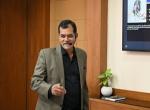Background
South Indian Ocean (SIO) is not an established geographical entity. But the geopolitical underpinnings of this region have become as dynamic as the Arabian Sea and Bay of Bengal. Currently, the Indian Ocean Rim Association (IORA) and Indian Ocean Naval Symposium (IONS) are the overarching pan ocean organisations coalescing economic and security cooperation in the region. There are also some mini-lateral organisations such as the Indian Ocean Commission (IOC), the EU Nestor and EU MASE etc., which are fusing capacities of the resident nations through multi-sectoral arrangements. But there are many challenges within that impair the effective management in the SIO. African countries in the region are more concerned about local issues of governance, poverty, disease and internal security than the broader strategic issues that concern the wider region. The African Union has developed the 2050 Africa’s Integrated Maritime strategy which provides a framework for cooperation but much more needs to be done.
The involvement of extra-regional countries in regional arrangements is a challenge. Major Powers like the US, China and Japan have legitimate interests in regional maritime security. The US has a base at Camp Lemonier at Djibouti since 9/11 and the Diego Garcia which is primarily a British Indian Ocean Territory (BIOT). The French had colonised Djibouti in 1862 until its independence in 1977 and is home to their largest military base in the Indian Ocean. Djibouti also hosts the German, EU and Spanish troops for anti-piracy missions. Close by, in Assab, Eritrea, UAE operates a military base and is planning to set another in Berbera in Somalia.

China’s logistic supply facility at Djibouti is likely to base approximately 10,000 troops. There are a number of potential candidates among the weak and underdeveloped countries in SIO who would like to lend or lease ports to bolster their infrastructure. China has a close and longstanding relationship with Tanzania and is believed to have recently taken control of the newly built port of Bagamoyo, around 50 km North of the Dar es Salaam and will also require naval facilities in the central and/or eastern Indian Ocean as part of its Indian Ocean network.
Research Questions
VIF had earlier organised Round Table Discussions (RTDs) on the Bay of Bengal and the Arabian Sea. Both the water bodies are embayed in the North Indian Ocean. This led VIF to explore the SIO and its intramural challenges. Considering that dynamics of maritime security in the Eastern and Western Indian Ocean are disparate, the RTD primarily focused on issues pertaining to the Western Indian Ocean (WIO) and examined several key issues which will determine the future stability of the WIO. The Eastern Indian Ocean (EIO) will be dealt with separately. In order to focus the discussion and derive policy recommendations the following questions were discussed:-
• What is the significance of the physical geography and trade aortas criss-crossing the WIO?
• How does the economic disparities and governance impact regional security?
• What are the capacities and regional structures in WIO to deal with Non-Traditional Security (NTS) threats and challenges?
• How can India be a net-security provider in the region?
• Does the footprint of extra-regional players in the WIO including that of China congeal or disturb the stability in the region?
Director’s Remarks
The region has been the hotbed of non-traditional threats. It has also gained salience for the unfolding strategic competition between great powers mostly exogenous to the region, especially encouraged by hedging smaller countries that were otherwise insignificant. But there are sensitivities as to how involved these major powers should be.
Traditional and non-traditional security challenges largely converge at sea as they impact economic, environmental, energy, human, food and national security. Given the varied nature challenges and capacities in the IOR, sub-regional cooperation may be more achievable and effective way of taking regional maritime governance forward. As a major regional power, India's willingness and capacity to provide strategic leadership is critical to engendering a cooperative spirit of shared destiny.
Remarks by Vice Adm Anil Chopra (Member NSAB)
The RTD intends to analyse if the newfound interest in the WIO is of any utility to India or is it purely an academic exercise. WIO is not an established geographical entity, but for the purpose of this analysis, it encompasses the ocean space and littorals on the East coast of Africa.
Traditionally India has been engaged diplomatically in the region which is supported by burgeoning trade and military assistance to the states, especially in the WIO. India shares common interests with France and security interest with all the countries. As a result, India has been augmenting the capacities of some countries by the way of military hardware, training, exercises, infrastructure and Maritime Domain Awareness (MDA). Enhancement of infrastructure in Agalega (Mauritius) and Assumption (Seychelles) Islands, gifting of ships and aircraft etcetera are measures that India has taken, to maintain peace, stability and good order in the region, which is also in keeping with the vision of SAGAR enunciated by Prime Minister Modi.
Military presence of the US and France in Djibouti been a constant for decades. India's active role, international trade, non-traditional threats and challenges also have achieved a certain amount of predictably and consistency. What has changed is clearly China’s foray in the WIO, which is having a profound impact on the regional alignments. Therefore, the leitmotif of the discussion was to discover what India could do more in terms of economic aids, force levels, tempo and manpower etcetera. With this backdrop, the RTD was aimed at addressing the five research questions.
Discussions
Physical Geography and Trade Aortas - WIO has a total area of approx. 32,000,000 sq km and is home to 17 countries, the Red Sea, the Mozambique Channel and the choke point of Bab-al-Mandeb. Whilst the enclosed geography of the Indian Ocean has on one hand constrained political leverages to some, on the other, it has accorded strategic advantages to extra-regional players and small island state. Since maritime security has a geopolitical dimension, the legitimate interest to protect the burgeoning trade from non-traditional and traditional threats has raised the stakes for all. Some threats have been exaggerated by China to justify the continued presence of its ships and submarines in the region. This has led to the militarisation of the WIO and raised concerns for India. The plausible counter to balance China’s militarisation is by increasing Indian force levels and tempo of operations in the near term the Indian Ocean and by progressively enhancing Indian Navy’s strategic reach and sustenance.
Economic Disparities and Impact on Governance – WIO has one the most diverse economic characteristics. Whilst Small Island Developing States (SIDS) of Seychelles, Sri Lanka and Mauritius have high Human Development Indices (HDI), Kenya, Tanzania and South Africa have medium HDIs and Mozambique and Madagascar are low on HDI. Even more important is the comparison of their GDP vis-à-vis the size of EEZs. Since the SIDS do not have the economic capacities to protect their own interests, they are vulnerable to transnational crime, illegal and unauthorized exploitation of maritime economy and sovereignty. Neither do they have the capability or expertise to monitor, regulate or govern their own waters. Whilst India has been forthcoming to their aid, the SIDS have been lured by the economic largess from China. India’s proximity and capabilities to render assistance during natural calamities have been taken for granted and sensitivities of India’s geostrategic concerns are being overlooked. Thus India needs better diplomatic communication and naval engagements to demonstrate her benign significance as a resident power and give focused attention to small island states that are otherwise vulnerable to China’s inducements.
Regional Structures to deal with NTS Threats and Challenges – The security structure in place for WIO is Djibouti Code of Conduct (DCoC). Since its inception in January 2009, DCoC focused only on piracy and armed robbery. This has been altered by the Jeddah amendment in January 2017 to include wider elements of Maritime Security and Blue economy. Thus it is in consonance with the Prime Minister’s vision of SAGAR (Security and Growth for All). India is neither a member nor an observer of DCoC. In addition, maritime security in the WIO has invited the presence of major navies including the US-led TF 150, TF 151, India, China, Russia, Japan and EU. IORA and IONS are other pan Indian Ocean structures. Maritime safety and security and disaster risk management are two of the five objectives of the IORA charter. IONS, on the other hand, provides the platform for honing skills and interoperability between nations. The IOC, founded in 2005, comprises Comoros, Madagascar, Mauritius, Seychelles and Reunion Island (France). It has ‘stability and diplomacy' as one of its strategic goals which aim to ensure peaceful, stable and inclusive Indian Ocean. France has common strategic interest with India, which can be vindicated by the conduct of naval exercise Varuna-2018 off the Reunion islands. The need, however, is for India to construct coordination bodies and curriculums who would be responsible for maritime safety, security disaster and risks. India should also join the DCoC as a member to effect change from within and assume leadership.
India as a Net Security Provider – Net security requires surplus and customised assets, willingness to employ national resources (civil aviation, merchant marine, coast guard, hydrography, specialist skills etc.) and credible military power. Whilst policy direction in terms of SAGAR already exists, the question is if India has the adequate economic capacity and military resources for maintaining good order and contingency response. In this regard, will India be able to provide global public goods if the US was to decline? India central position and geostrategic concerns dictate that India fills the strategic space being created by the US’ eventual withdrawal, lest China fills them in the IOR. Under these conditions, it would be essential for India to allocate adequate budget and create commensurate capacities in the WIO if it has to ascend to the role of a net-security-provider. There is also the need for formulation a National Security Strategy (NSS) that emphasizes on maritime security.
Does the footprint of Extra-Regional Players disturb the Stability – All major countries have the capacity to deploy forces in WIO to protect their interests. However, to sustain the forces, Operational Turn Round facilities would be required. However, a responsible stakeholder goes beyond her national interests and strives to protect and strengthen a region as a stabilising force. In this respect, the roles of China vs the US stands out for their contrast. Interestingly, though there is a convergence between the policies of India and US, however the contrast in their capacities become the prime handicap for India to play a meaningful role. Thus China’s strategic intents in the WIO continues to grow. This is further magnified by the SIDS who try to hedge between China and India to exact maximum economic gains. In order to counter China, the strategic perceptions of India will have to address the expectations and sensitivities of the nations in the WIO. The question to ponder is how this gap can be bridged. This will require greater engagement would be necessary with WIO countries, backed by deft diplomacy, economic commitment and a strong military.
Policy Recommendations
In the backdrop of above discussions the RTD arrived at the following policy recommendations:-
• India would need to increase force levels and enhance Indian Navy’s strategic reach and sustenance in the WIO.
• India should give focused attention to small island states that are otherwise vulnerable to China’s inducements.
• India should join the Djibouti Code of Conduct (DCoC) and coordinate maritime security with IORA.
• India should appropriate adequate budget to create and enhance its role as a net security provider.
• India should have maritime security dialogue with more island countries in the region and back it up with strong diplomacy, economic assistance and defence cooperation.
• Regional Maritime security should be incorporated into the National Security Strategy (NSS).








Post new comment